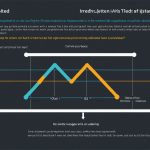PLM software revolutionizes product development by providing a single source of truth that enhances collaboration, quality, and compliance. It integrates design, manufacturing, and service data to streamline processes and reduce waste. By embedding sustainability into every lifecycle phase, PLM empowers businesses to innovate responsibly while cutting costs and accelerating time to market. Understanding these capabilities reveals how PLM drives both efficiency and eco-conscious growth.
Understanding PLM Software and Its Core Functions
PLM software acts as an enterprise platform managing product data and processes across the entire product lifecycle. It facilitates comprehensive management of product information, from initial concept to disposal, supporting collaboration among dispersed teams.
Also to discover : Unlocking venture capital: innovative strategies startups can use to stand out in a crowded market
Key features include BOM management, which ensures data consistency across departments; change control, streamlining modifications while maintaining traceability; and collaboration tools, enabling real-time communication. These core functions support activities in product design, manufacturing, and lifecycle management.
Modern PLM solutions, often cloud-based platforms, enhance scalability and accessibility, allowing teams to work seamlessly across geographical boundaries. They integrate with CAD tools and other enterprise systems like ERP to ensure data synchronization. The benefits of centralized product data—such as improved decision-making, faster time-to-market, and sustained product quality—are fundamental to efficient operations.
In parallel : Unlocking synergy: strategies for enhancing collaboration among cross-functional teams in tech projects
PLM forms the backbone of digital thread strategies and supports sustainable product development with features aimed at reducing waste, increasing reuse, and ensuring compliance. This comprehensive approach helps organizations innovate responsibly while maximizing resource efficiency.
Benefits of Implementing PLM Software in Business
Product lifecycle management solutions revolutionize enterprise product data management by unifying information silos across design, engineering, and manufacturing. Organizations adopting PLM software gain one centralized product data repository, which dramatically enhances cross-functional team collaboration and serves as a trustworthy, accessible single source of truth. This approach enables advanced change tracking and version control while reducing manual errors and redundant work.
Effective enterprise product data management boosts agility, allowing companies to respond swiftly to market changes and customer demands. Automated workflows in product lifecycle management solutions streamline compliance documentation and bill of materials management, thus speeding up development cycles and impacting time-to-market positively. Cloud-based PLM platforms reinforce this agility, supporting real-time global teamwork and scaling effortlessly as enterprise needs expand.
Modern product lifecycle management solutions facilitate robust integration with CAD tools, ERP systems, and even supply chain analytics. This connectivity empowers better regulatory compliance, traceability, and collaboration with suppliers or third parties. Overall, enterprise product data management with PLM leads to improved product quality, cost efficiency, and operational resilience—foundational elements for digital transformation and sustainable growth.
Industry Applications and Vendor Comparisons of PLM Software
Industry-specific PLM implementations demonstrate unique value in heavily regulated fields such as aerospace, automotive, MedTech, and electronics. For instance, PLM for manufacturing innovation in aerospace ensures traceability through advanced change tracking and version control, crucial for meeting certification standards. Automotive manufacturers benefit from enterprise product data management, enabling the management of complex assemblies and a digital thread in product development that spans design to aftersales.
In MedTech, PLM software for medical device development is essential for regulatory standards compliance support, including Design History Files and audit trails. Electronics manufacturers favor cloud-based PLM platforms, which streamline collaboration and supplier integration, essential for rapid market cycles. Leading vendors like Siemens Teamcenter, the Windchill platform, and Autodesk Fusion tailor product lifecycle management solutions for each sector by focusing on integration capabilities, process automation, and sustainability metrics tracking.
Evaluating Top PLM Vendors and Solutions
A top PLM vendors comparison revolves around customizable workflows in PLM, user experience in PLM software, and scalability of PLM systems for enterprises. Teams should assess the flexibility of key features of modern PLM solutions, effectiveness in automating change management workflows, and robust PLM integration with CAD tools. Selection considerations include cloud vs on-premise PLM solutions and ease of scaling for future growth, especially for global collaboration enabled by PLM.
Trends Shaping Future PLM Adoption and Capabilities
Current innovations prioritize integration with IoT and the adoption of AI-driven analytics in PLM. These tools are enhancing digital transformation with PLM, driving intelligent insights across the collaborative product development lifecycle. Cloud-based PLM platforms now enable real-time product status updates, supporting sustainable product development strategies and sustainability metrics tracking. Such advancements ensure role of PLM in supply chain optimization and aligning design decisions with environmental goals, securing the strategic advantages of PLM adoption across all stages.
How Product Lifecycle Management Solutions Drive Modern Product Development
Product lifecycle management solutions have transformed how organizations manage, share, and secure product data. At their core, these platforms serve as the authoritative source for all enterprise product data management, turning scattered files into actionable resources accessible by cross-functional teams. By leveraging advanced change tracking and version control, teams ensure every update is traceable, reducing errors and streamlining audits.
Modern PLM brings the digital thread in product development to life. Teams use cloud-based PLM platforms for real-time collaboration, connecting engineering, design, and manufacturing with a single, trusted data source. This approach delivers tangible benefits:
- Enhanced efficiency through automated workflows and searchable documentation.
- Seamless PLM integration with CAD tools, allowing direct sync between design outputs and lifecycle records.
Adoption also provides the benefits of centralized product data, enabling agile change management and supporting compliance. Features like advanced BOM management and secure user role management within PLM safeguard intellectual property while maintaining operational transparency. Scalability of PLM systems for enterprises means even complex organizations can expand confidently without jeopardizing data integrity.
Effective use of PLM platforms accelerates delivery, fosters innovation, and helps organizations navigate growing product complexity with clarity and control.







